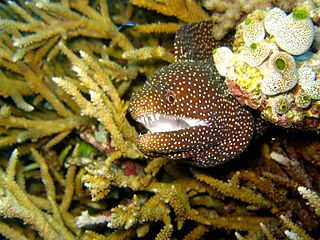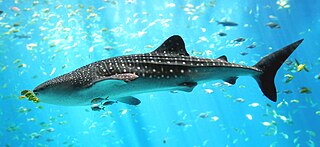Genus /ˈdʒiː.nəs/ is a taxonomic rank used in the biological classification of living and fossil organisms as well as viruses. In the hierarchy of biological classification, genus comes above species and below family. In binomial nomenclature, the genus name forms the first part of the binomial species name for each species within the genus.

The bulbuls are a family, Pycnonotidae, of medium-sized passerine songbirds, and includes the greenbul, brownbul, leaflove, and bristlebill. The family is distributed across most of Africa and into the Middle East, tropical Asia to Indonesia, and north as far as Japan. A few insular species occur on the tropical islands of the Indian Ocean. There are over 150 species in 32 genera. While different species are found in a wide range of habitats, the African species are predominantly found in rainforest, whereas Asian bulbuls are predominantly found in more open areas.

Bulbophyllum is a genus of mostly epiphytic and lithophytic orchids in the family Orchidaceae. It is the largest genus in the orchid family and one of the largest genera of flowering plants with more than 2,000 species, exceeded in number only by Astragalus. These orchids are found in diverse habitats throughout most of the warmer parts of the world including Africa, southern Asia, Latin America, the West Indies, and various islands in the Indian and Pacific Oceans. Orchids in this genus have thread-like or fibrous roots that creep over the surface of trees or rocks or hang from branches. The stem is divided into a rhizome and a pseudobulb, a feature that distinguished this genus from Dendrobium. There is usually only a single leaf at the top of the pseudobulb and from one to many flowers are arranged along an unbranched flowering stem that arises from the base of the pseudobulb. Several attempts have been made to separate Bulbophyllum into smaller genera, but most have not been accepted by the World Checklist of Selected Plant Families.

A booby is a seabird in the genus Sula, part of the family Sulidae. Boobies are closely related to the gannets (Morus), which were formerly included in Sula.

Bandicoots are a group of more than 20 species of small to medium-sized, terrestrial, largely nocturnal marsupial omnivores in the order Peramelemorphia. They are endemic to the Australia–New Guinea region, including the Bismarck Archipelago to the east and Seram and Halmahera to the west.

The Lamniformes are an order of sharks commonly known as mackerel sharks. It includes some of the most familiar species of sharks, such as the great white, as well as more unusual representatives, such as the goblin shark and megamouth shark.

Lagenorhynchus is a genus in the infraorder Cetacea, containing only a single extant species as of 2021: the white-beaked dolphin. In addition, the extinct species Lagenorhynchus harmatuki is also classified in this genus.

Moray eels, or Muraenidae, are a family of eels whose members are found worldwide. There are approximately 200 species in 15 genera which are almost exclusively marine, but several species are regularly seen in brackish water, and a few are found in fresh water.

Carpet sharks are sharks classified in the order Orectolobiformes. Sometimes the common name "carpet shark" is used interchangeably with "wobbegong", which is the common name of sharks in the family Orectolobidae. Carpet sharks have five gill slits, two spineless dorsal fins, and a small mouth that does not extend past the eyes. Many species have barbels.

Gesneriaceae, the gesneriad family, is a family of flowering plants consisting of about 152 genera and ca. 3,540 species in the tropics and subtropics of the Old World and the New World, with a very small number extending to temperate areas. Many species have colorful and showy flowers and are cultivated as ornamental plants.

The tamarins are squirrel-sized New World monkeys from the family Callitrichidae in the genus Saguinus. They are the first offshoot in the Callitrichidae tree, and therefore are the sister group of a clade formed by the lion tamarins, Goeldi's monkeys and marmosets.

The mosaic gulper shark is a small rare deepwater dogfish, found in the Pacific Ocean around Honshū, Japan and the Hawaiian Islands at depths between 260 and 728 m. It is one of 13 described species in the genus Centrophorus.

Mesostigmata is an order of mites belonging to the Parasitiformes. They are by far the largest group of Parasitiformes, with over 8,000 species in 130 families. Mesostigmata includes parasitic as well as free-living and predatory forms. They can be recognized by the single pair of spiracles positioned laterally on the body.

Pytilia is a genus of small brightly coloured seed-eating birds in the family Estrildidae. They are distributed across Africa.
Hypovirus is a genus of viruses, in the family Hypoviridae. Fungi serve as natural hosts. There are four species in this genus. Diseases associated with this genus include: host virulence reduction.

The Scalopinae, or New World moles, are one of three subfamilies of the family Talpidae, which consists of moles and mole-like animals; the other two subfamilies being the Old World talpids and the Chinese shrew-like moles (Uropsilinae). The Scalopinae are the only Talpidae subfamily to consist entirely of undisputed moles and no mole-like close relatives such as shrew-moles or desmans.
Turriviridae is a family of viruses; it contains only one genus, Alphaturrivirus. The archaea Sulfolobus solfataricus serve as natural hosts. There are two species in the genus Alphaturrivirus.
Permutotetraviridae is a family of viruses. Lepidopteran insects serve as natural hosts. The family contains one genus that has two species. Diseases associated with this family include: infection outcome varies from unapparent to lethal.

The Solanaceae, or nightshades, are a family of flowering plants that ranges from annual and perennial herbs to vines, lianas, epiphytes, shrubs, and trees, and includes a number of agricultural crops, medicinal plants, spices, weeds, and ornamentals. Many members of the family contain potent alkaloids, and some are highly toxic, but many—including tomatoes, potatoes, eggplant, bell and chili peppers—are used as food. The family belongs to the order Solanales, in the asterid group and class Magnoliopsida (dicotyledons). The Solanaceae consists of about 98 genera and some 2,700 species, with a great diversity of habitats, morphology and ecology.
Nitrospinae is a bacterial phylum. Despite only few described species, members of this phylum are major nitrite-oxidizing bacteria in surface waters in oceans. By oxidation of nitrite to nitrate they are important in the process of nitrification in marine environments.














